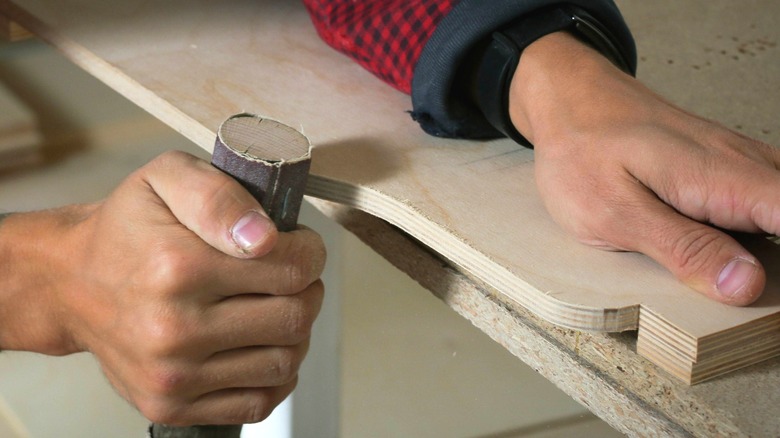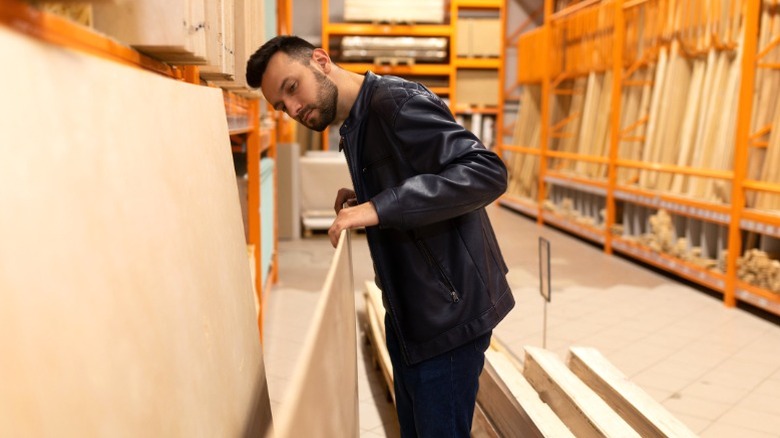The Secret To Choosing A Good Piece Of Plywood For Every Project You Take On
Buying plywood can seem like an easy decision your first time around, as the budget-friendly route often seems the most sensible option. But if the price tag is all you're looking at, you'll miss the details that truly matter. The fact is every piece of plywood has different projects to match. When you don't take the time to thoroughly examine each piece, your build's looks and/or longevity could suffer significantly.
Several construction characteristics determine which plywood pieces are best for which jobs. You may need to choose pressure-treated wood for an outdoor build, or you might want a fashionable face for an indoor furniture piece. Selecting for aesthetics is typically straightforward. You can usually easily see when pieces are flat, damage-free, and attractive, but plywood specs also have visual grades for panels. Letters and numbers reflect the face and back quality, respectively ("A" and "1" being the best) and combine to indicate the plywood's grade, like A1, B2, or C3. Generally, grades A and B are best for exposed plywood cabinets or furniture. Grades below C are more cost-effective for structural or otherwise hidden areas.
Importantly, these ratings only define the outer veneer quality. Even the weakest plywood piece can look good on its broad sides. After you check the surfaces, the secret to getting the ideal piece of wood for your project is to examine the edges and core. By comparing the number and quality of the layers, you can get a better value and more satisfying results.
What to check for when choosing good plywood pieces
Plywood comes with various core materials, like particleboard or MDF, affecting aspects like durability, weight, and ultimately, price. Beyond the material, the number of layers can also impact performance. Some plywood includes three layers, while other pieces have five or more despite being the same thickness. Generally, more plies mean greater stability and strength, largely due to a higher proportion of glue. The added durability is ideal for structural uses. Meanwhile, fewer plies work well for panels or non-load-bearing cabinet dividers. Always check the ply layers after looking at the plywood's front and back. And as you inspect the edges, don't forget to check for delamination, voids, and overlapping layers that might cause issues down the road.
Comparing these details between all the different options can often make plywood shopping overwhelming. To make life easier, sometimes the most user-friendly shopping approach is to go back to the basics — looking at the cost. Plywood is very much a "you get what you pay for" purchase. If two pieces have similar A1 ratings but different prices, there's something accounting for it. More expensive pieces could have more layers or higher-quality parts, like better core materials or resilient, waterproof glue, as you might find in marine-grade plywood. Prioritize the specs you need based on the application, and pick the highest-quality product you can afford. Then, you only have to sort through the stack, checking for warping and damage, to find the best plywood pieces for your project.

